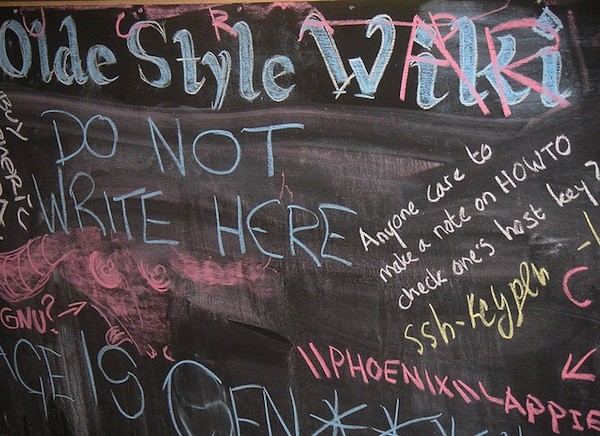Wikipedia: Information Source and Knowledge Community

One of the challenges facing the digital media and learning community—in fact, all educators—is the rapid pace of technological development that makes necessary the constant evaluation and investigation of new information and communication technologies. As a writing researcher, I am fascinated by the way in which knowledge communities shape writing, and these knowledge communities are often effective means of orienting students to new information sources. One of the most fascinating of these communities is Wikipedia, and Colleen A. Reilly of the University of North Carolina, Wilmington, has just written an interesting new article on how students can be taught to understand and participate in Wikipedia.
Building on Jay David Bolter and Diane Gromala's Windows and Mirrors, Reilly argues that students should not be taught to view Wikipedia as a simple window on information; that is, as a technology that they look through in order to view the facts and histories contained on the site. Reilly identifies—correctly, I think—this windowed approach to the online encyclopedia as being the source of many individual objections to it, such as the quality of its writing or the tendency to vandalism. Viewing Wikipedia as a simple presentation of information, one which is to be accepted uncritically (i.e., to treat it as one might be tempted to treat other reference works), is to miss the point. Instead, Reilly argues that students should be taught to read Wikipedia—and all reference works—as mirrored technologies; that is, to understand how these communication technologies, as she puts it, "allow and encourage users to see, simultaneously, a reflection of the media’s use in context, helping users to be aware of the technologies’ designs, their status as constructed media, and the mechanisms through which they function."
Wiki-experiments
Wikipedia allows students to engage with the knowledge community that creates and maintains the information on the site. When I teach Wikipedia in my media studies classes, I sometimes do an experiment: I encourage students to make a substantive change to a Wikipedia article on a subject in which they have some expertise, then check back later to see if their edit stayed in the article, or got deleted. In many cases, they find that their edits are deleted by other editors on the site. I then encourage them to spend some time on the same article immersing themselves in the community around that article: reading the talk pages to see what issues other editors have noted on the site, scanning through the edit history of the article to how it has developed over time.
After doing this, I have my students edit the article again, but this time I encourage them to take into account the concerns of this community as they do so. Perhaps in their first edit they made their changes to a section of the site that other users were engaged in a dispute over, or added factual information that the community thought was unimportant or non-encyclopedic. In their second edit, they have the opportunity to address the concerns of their fellow editors, perhaps by editing a section of the article that has been identified as needing improvement, or providing some other service these editors have recognized is necessary for the betterment of the piece.
Knowledge Community vs Information Source
The goal of the exercise is to have students realize that Wikipedia is not merely a listing of random facts accrued by anonymous editors over time; rather, it is a community of individuals actively engaged in the process of creating knowledge. When students realize this, they not only have a different understanding of Wikipedia, but also of the ways that other sources of information—the news media, or scholarly publications—are also produced by knowledge communities that effect the ultimate form that the information they produce will take.
The primary takeaway for educators who wish to use Wikipedia (or other Web technologies) in the classroom is that Wikipedia, like all information technologies, makes assumptions about what information is valuable, what counts as truth, and the best means for determining these qualities. Further, it highlights these same assumptions on the part of other information resources, and provides a fruitful means of investigating these assumptions, making them part of the students analytical inventory. Another important benefit of this approach for students is that it allows them to develop confidence in their own abilities—as learners, as researchers—that can empower their interaction in other online environments. As Reilly notes, quoting Pollard, it prepares them to be "twenty–first–century learners" with skills like "digital–age literacy, inventive thinking, effective communication, and high productivity." Further, activities like this one help students engage with the discourse communities that surround information resources, a complex practice that is connected to literacy rather than a one-size-fits-all approach.
Banner image credit: teemow http://www.flickr.com/photos/teemow/29921948/
Comments